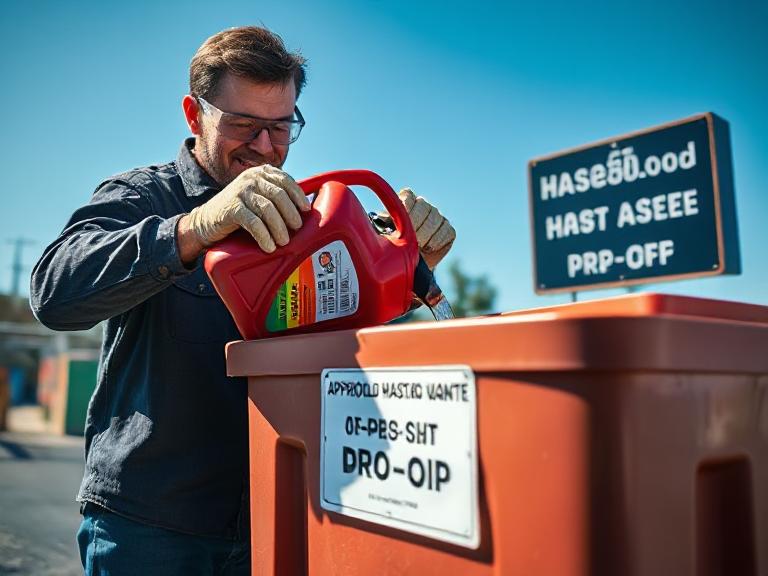Gasoline doesn’t last forever, and old or contaminated gas can be hazardous if not disposed of properly. Whether you’re cleaning out your garage or dealing with fuel from a lawnmower, generator, or car, knowing how to dispose of old gas is crucial for safety and environmental protection.
In this guide, we’ll cover:
- Signs that gas has gone bad
- Safe storage tips for old gas
- Approved disposal methods
- Where to take old gasoline
Table of Contents
- How to Tell If Gas Has Gone Bad
- How to Store Old Gas Before Disposal
- How to Dispose of Old Gas Properly
- What NOT to Do When Disposing of Gasoline
- Final Thoughts
How to Tell If Gas Has Gone Bad
Gasoline typically lasts 3 to 6 months before degrading. Ethanol-blended fuels break down even faster. Here’s how to identify bad gas:
- Dark or murky appearance (fresh gas is clear or light amber)
- Sour or varnish-like smell
- Gummy or sticky texture
- Engine sputtering or failure to start
If your gas shows these signs, it’s time for disposal.
How to Store Old Gas Before Disposal
If you can’t dispose of gas immediately, store it safely:
✔ Use an approved fuel container (metal or HDPE plastic)
✔ Keep it in a cool, dry place away from sunlight
✔ Label the container “Old Gas – Do Not Use”
✔ Keep away from open flames and sparks
How to Dispose of Old Gas Properly
Never pour gasoline down drains, into the soil, or in the trash—it’s illegal and harmful. Instead, follow these safe disposal methods:
1. Take It to a Hazardous Waste Facility
Most cities have household hazardous waste (HHW) collection centers that accept old gasoline. Check your local government’s website for drop-off locations.
2. Contact a Recycling Center
Some facilities recycle old gasoline into usable fuel. Call ahead to confirm if they accept gasoline.
3. Use a Waste Disposal Service
Companies like Firestone, Jiffy Lube, or local auto shops may accept old gas for a fee.
4. Check with Local Fire Departments
Some fire stations host hazardous waste collection events where you can safely dispose of gasoline.
5. Mix with Fresh Gas (If Still Usable)
If the gas is only slightly degraded, you can mix it with fresh fuel (up to 50% old gas) and use it in a lawnmower or other small engine.
What NOT to Do When Disposing of Gasoline
❌ Don’t pour it on the ground – Contaminates soil and water
❌ Don’t burn it in open air – Extremely dangerous
❌ Don’t dump it in the trash – Risk of fire or explosion
❌ Don’t flush it down drains – Harms plumbing and the environment
Final Thoughts
Knowing how to dispose of old gas protects you and the environment. Always use approved disposal methods like hazardous waste centers or recycling facilities. Never take shortcuts—gasoline is flammable and toxic.
Need help finding a disposal site? Check your city’s environmental services website or call 1-800-CLEANUP (U.S.) for guidance.
By following these steps, you can safely and responsibly get rid of old gasoline without risking harm to yourself or the planet.
